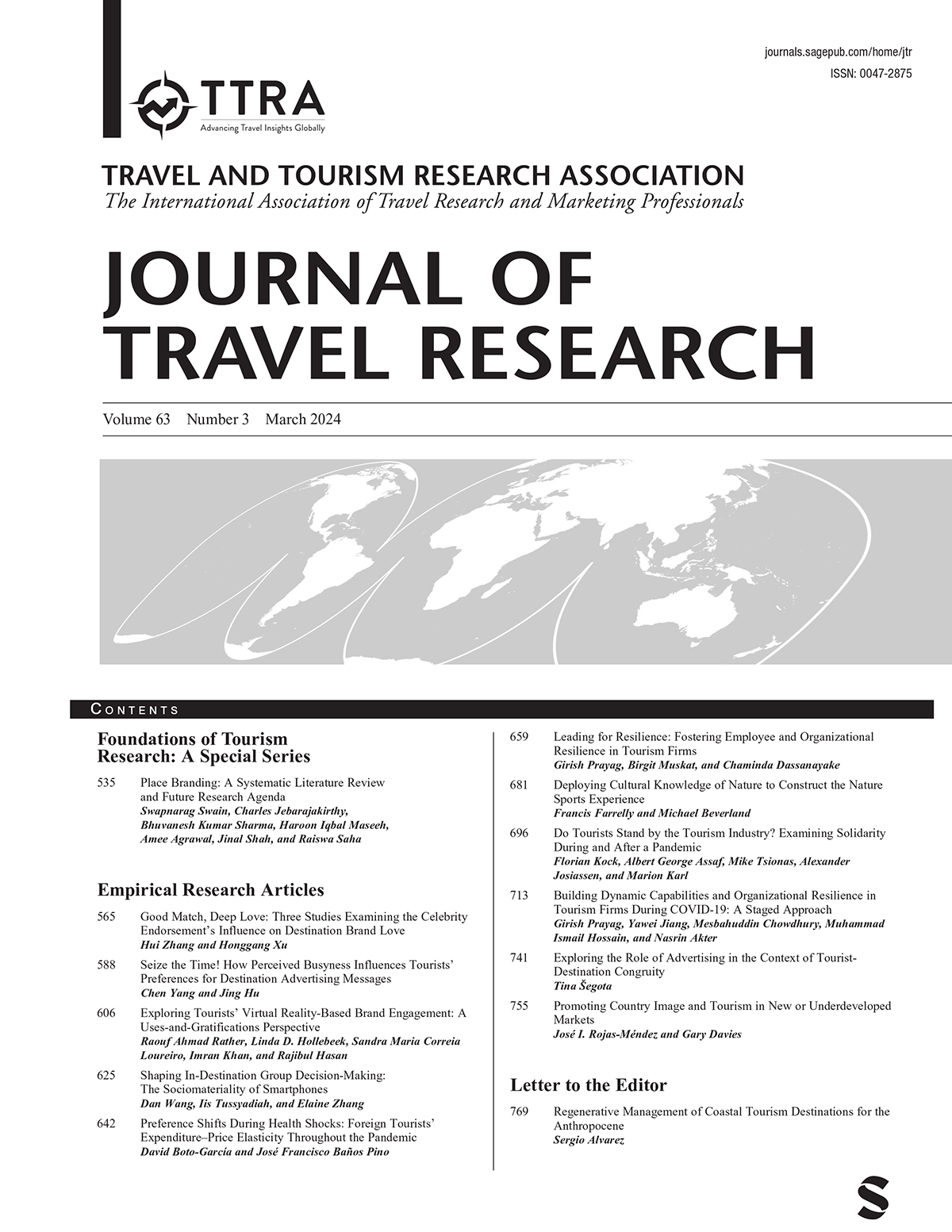一线员工的大脑有什么独特之处?结构神经影像学研究
IF 7
2区 管理学
Q1 HOSPITALITY, LEISURE, SPORT & TOURISM
引用次数: 1
摘要
捕捉面部表情的细微差别是一线员工与客人互动的重要组成部分,但人们对其神经认知机制知之甚少。本研究采用神经影像学方法,通过对前厅(FoH)员工与后厅(BoH)员工的大脑结构进行比较,探讨前厅(FoH)员工认知加工风格的个体差异。一项基于体素的形态学分析显示,63位酒店高管的大脑图像显示,FoH员工枕部和梭状回面部区域的灰质体积大于BoH员工,并且与一线经验的长短无关。这些区域与面部表情识别有关,而面部表情识别对前线角色的成功至关重要。我们的发现支持社会大脑假说。为了支持复杂的社会认知,资源被转移到与面部表情识别相关的大脑发育上。这种发展轨迹遵循了发展进化心理学中提出的延迟适应,而不是条件适应。本文章由计算机程序翻译,如有差异,请以英文原文为准。
What is Unique in the Brains of Frontline Employees? A Structural Neuroimaging Study
Picking up nuances of facial expression is a crucial part of frontline employee–guest interaction, yet little is known about its neurocognitive mechanism. We use a neuroimaging approach to explore the individual differences in cognitive processing style of front-of-house (FoH) employees by comparing their brain structures with those back-of-house (BoH). A voxel-based morphometry analysis of 63 senior hotel executives’ brain images reveals that the grey matter volume in the occipital and fusiform face areas of FoH employees is greater than that of BoH employees and does not depend on the length of frontline experience. These regions have been implicated in facial expression recognition that is critical to the success in frontline roles. Our findings support the social brain hypothesis. To support sophisticated social cognition, resources are diverted to brain development associated with facial expression recognition. This development trajectory follows deferred adaptation, rather than conditional adaptation, proposed in developmental evolutionary psychology.
求助全文
通过发布文献求助,成功后即可免费获取论文全文。
去求助
来源期刊

Journal of Travel Research
HOSPITALITY, LEISURE, SPORT & TOURISM-
CiteScore
18.90
自引率
9.00%
发文量
66
期刊介绍:
The Journal of Travel Research (JTR) stands as the preeminent, peer-reviewed research journal dedicated to exploring the intricacies of the travel and tourism industry, encompassing development, management, marketing, economics, and behavior. Offering a wealth of up-to-date, meticulously curated research, JTR serves as an invaluable resource for researchers, educators, and industry professionals alike, shedding light on behavioral trends and management theories within one of the most influential and dynamic sectors. Established in 1961, JTR holds the distinction of being the longest-standing among the world’s top-ranked scholarly journals singularly focused on travel and tourism, underscoring the global significance of this multifaceted industry, both economically and socially.
 求助内容:
求助内容: 应助结果提醒方式:
应助结果提醒方式:


